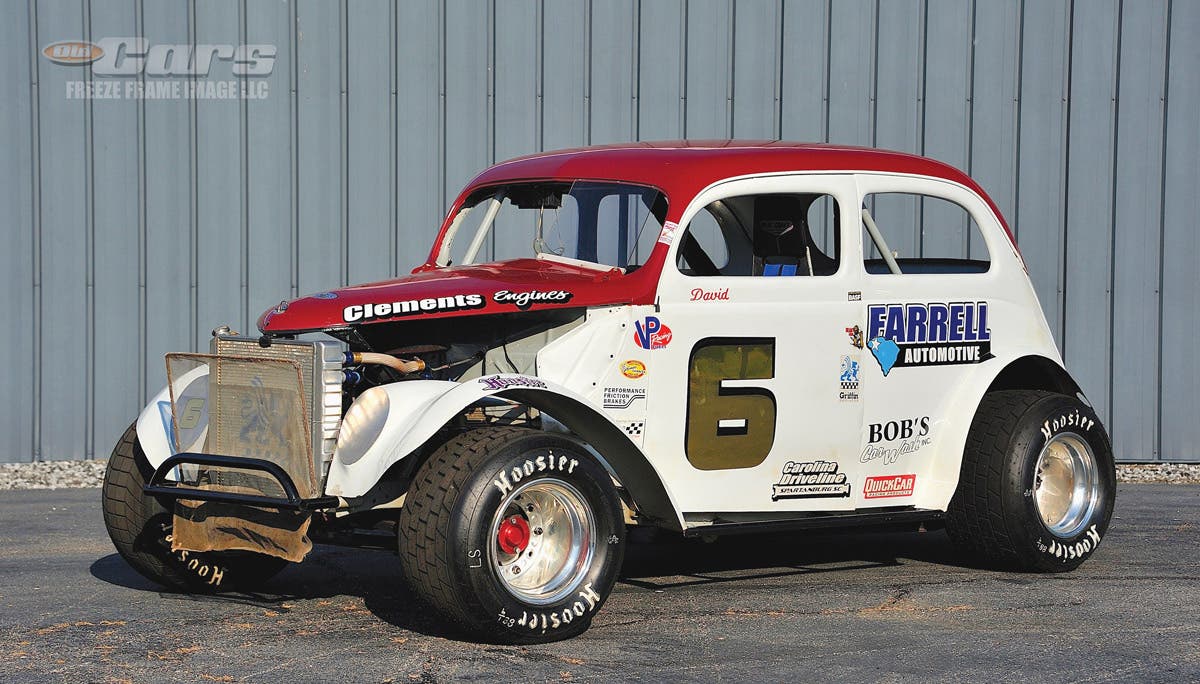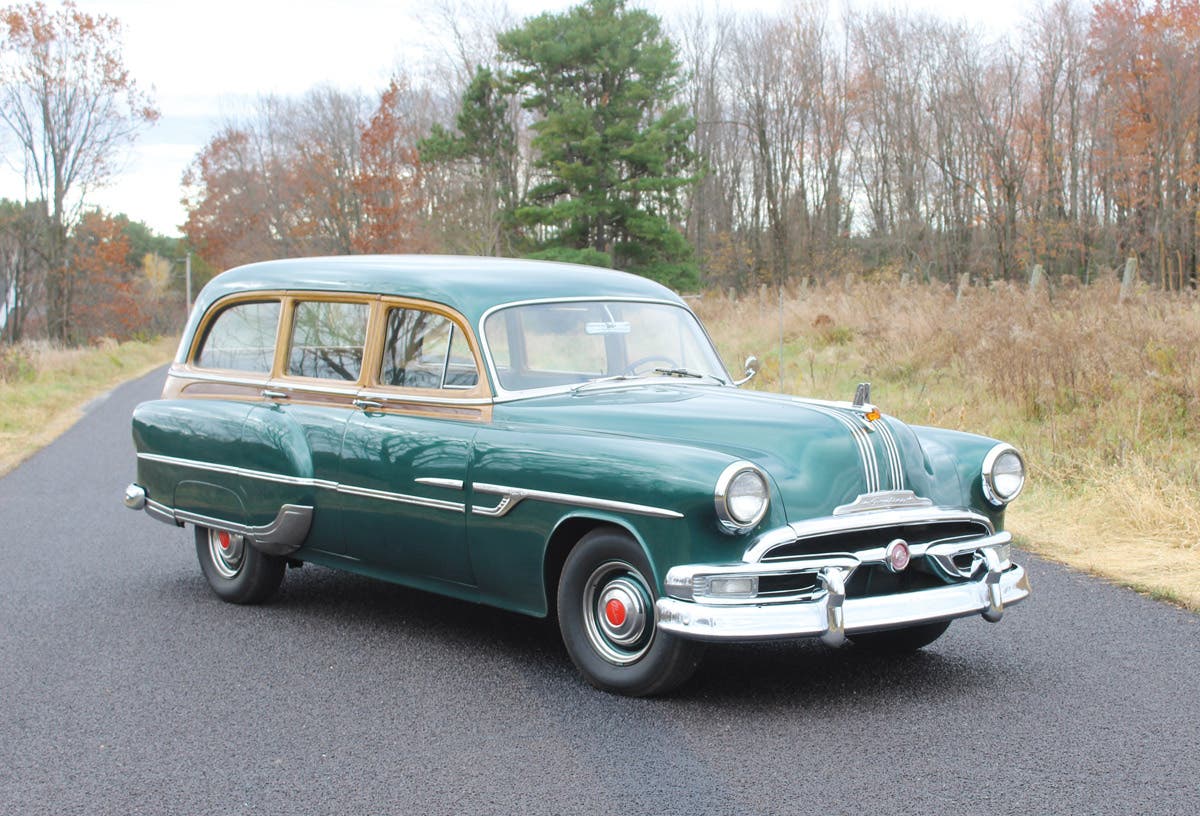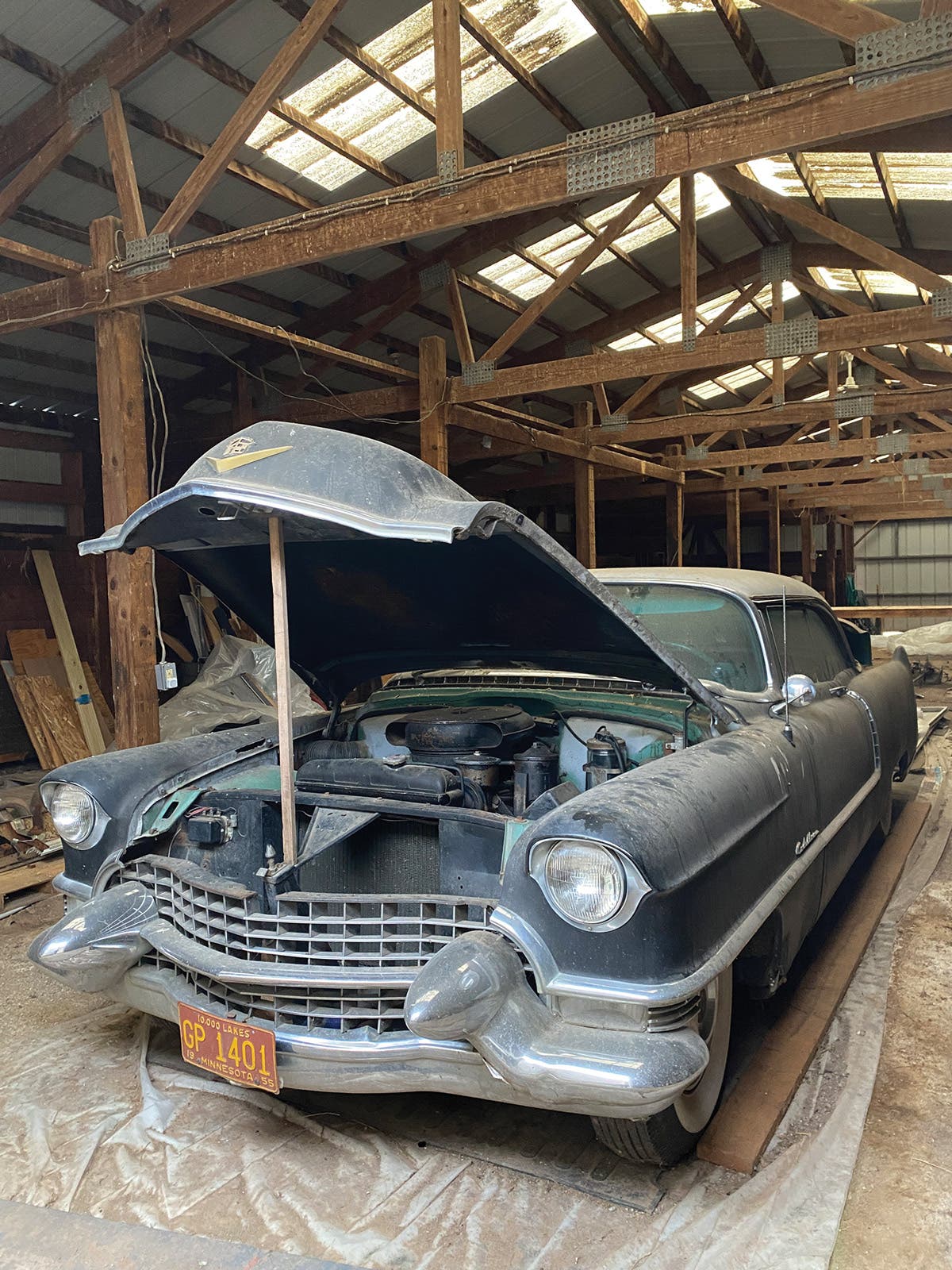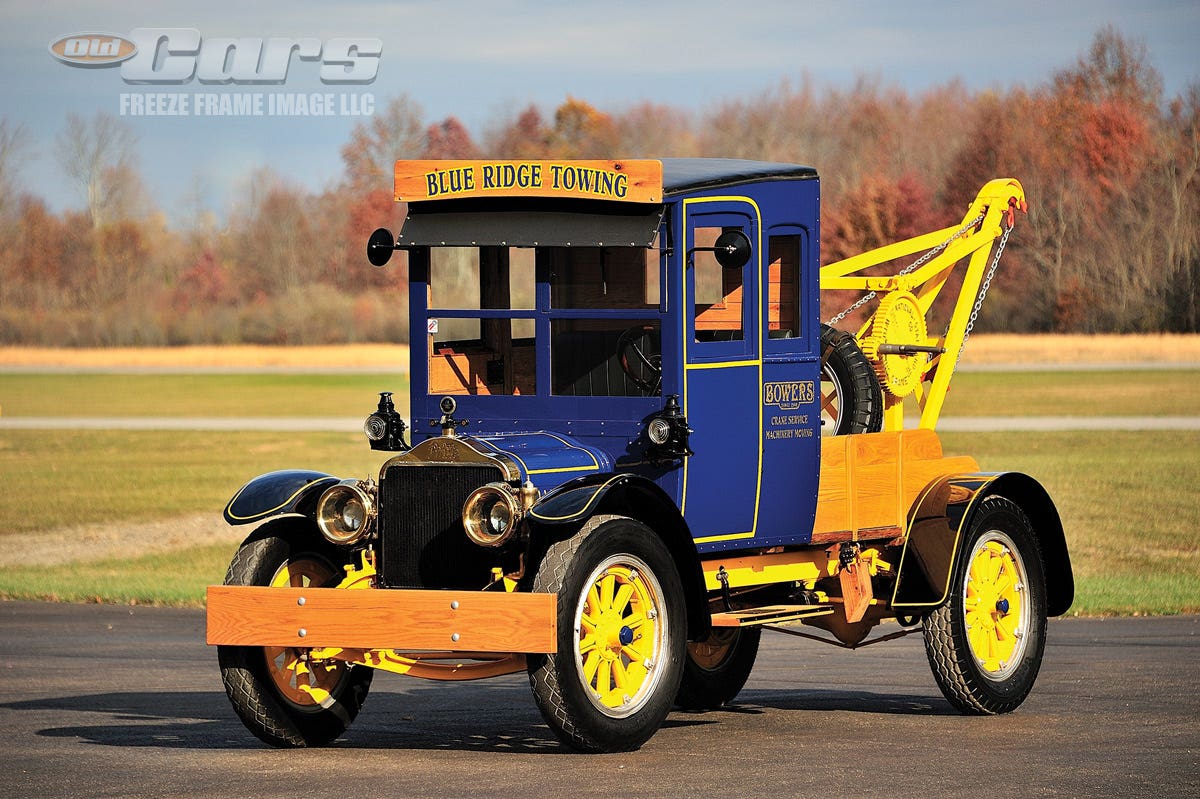Car of the Week: ‘Self-Parking’ 1953 Packard Cavalier
A Packard that could park itself using its spare tire? Yup, somebody thought of it. Meet Brooks Walker’s “self-parking” Packard.
By Angelo Van Bogart
Editor's note: We found this car's current whereabouts, securely in possession of an Old Cars reader again. See the update below for more information, including how the car survived a recent fire.
People have found parallel parking to be a pain for generations, so Brooks Walker set out to solve the problem. He wasn’t the first, but he was probably among the last before engineers gave up on the idea. In the 1950s, when Walker was patenting several of his self-parking system ideas, industry was racing into the future, and exposition crowds loved the wizardry and gadgetry showcased during the prosperous postwar economy. The automobile was among the most futuristic machines, both in appearance and appointments, and it’s for this reason that the lack of success of Walker’s self-parking system is so puzzling.
In 1953, Walker modified a new Packard Cavalier sedan from his California business, Walker Research, and made it into one of the most famous postwar Packards. Using a series of hydraulic pumps and lines, gears, and the Packard’s left rear tire and continental spare tire, Walker came up with his own unique system for easing the parking procedure for car owners. Apparently nobody bit on the idea, leaving Walker’s prototype, his personal 1953 Packard Cavalier, the only known example featuring the patented system.
As late as the 1970s, Walker was still developing a parallel-parking system for cars, and his last known effort was on a Saab sedan. At that time, he still owned several 1950s cars sporting variations of his self-parking device, including an early-1950s Ford station wagon, a 1957 Oldsmobile station wagon, and a 1951 Cadillac Series Sixty Special. All of these cars were modified from beneath to allow a tire to be hidden under the car until it was lowered in the process of parking the car. Each of these devices necessitated cutting out part of the bottom of each car, and, in the case of the station wagons, mild modifications were required. For instance, the third seat was made to face rearward (which Walker boasted to be the first person to implement) and the rear fenders were extended so that the gas tank could be hidden in the driver’s side fender.
What set the Packard Cavalier apart from Walker’s other self-parking cars was the fact the Packard used the tire of the continental kit to move the car from side to side. This spark of genius brought Walker closer to his goal of making the self-parking system a bolt-on kit that could be applied to any car without changes to its basic structure.
By using a Packard, Walker knew his target audience for the self-parking device. He also knew that the device should be easy to use, so that any white-gloved debutante would be comfortable using the system when parking her Packard in front of Bloomingdale’s for a day of perfume sampling and evening-gown shopping. To engage the self-parking feature, my lady simply flipped one of three dash-mounted switches to lower the continental tire, which descended via the hydraulic pumps until the car’s rear wheels were lifted off the ground by the spare tire. Once in the air, and with the car running, she then could shift the car into gear so the right rear tire spun. While the tire spun, it turned a wooden wheel that started a series of belts into motion. The belts spun a giant gear on the back of the continental spare tire, which turned the tire left or right, depending on which gear the car was in. If the lady of the house put the car in “Reverse,” the Packard’s tail section moved the car away from the curb. When she selected “Drive,” the car turned toward the doorman waiting on the curb. Because the self-parking system used the Packard’s drivetrain, the brakes also worked to stop the continental spare tire from turning once the car was in position. Before she grabbed her hand purse to hit Bloomingdale’s women’s department, all the driver had to do was lower the car and turn it off.
After demonstrating this exact procedure at several auto shows in 1953, Walker kept the Packard in order to maintain the patent on (and secrecy of) the self-parking device. While he drove the Cadillac Sixty Special for more than 100,000 miles with its under-the-trunk unit, he drove the Packard far less often. Today, it sports only 48,000 miles.
The unique Packard has only passed into two other collections since Walker sold it in the 1980s. A friend of Willie Mehn of Berlin, Wisconsin, found the Packard in a barn while he was looking at another car and convinced Mehn he needed it. After conferring with his grandson, Michael Mehn, the pair agreed to purchase the car as a team.
Since the car remained in Walker’s personal California-based collection, it was remarkably well-preserved. The paint had suffered chips over time, and since Michael is a professional painter by trade, he and Willie decided a car as majestic as the Packard was deserving of a repaint. Not ones to do anything only partially, all of the chrome and stainless trim was removed, and only those pieces that needed buffing or rechroming were attended to. Even the weatherstripping was in excellent shape, and it was reinstalled after the car received its fresh coat of light blue paint.
Mechanically, the car was also in fine condition, with the exception of the self-parking system’s hydraulic components.
“The car would go up and down, but there wasn’t enough pressure to lift it, because the hydraulics leaked,” Willie Mehn said. “We are planning on using [the self-parking system] at car shows, so we went through the whole thing.”
In addition to rebuilding the hydraulic pumps, new belts and hoses were also installed to ensure the system would work for many years.
Today, the Packard’s unique hydraulic self-parking setup will allow the car to, literally, run in circles, just as Walker intended.
UPDATE:
Jack Swaney of Pennsylvania saw the article and wrote to say his father William Swaney purchased the car December 2005 and sill has it.
"We have rebuilt the brake system, replaced all five tires, reupholstered the front and rear seats, rebuilt the cylinder and valve for the rear tire and the car now works great," Swaney wrote.
"On June 29, 2012, there was a fire outside the building where it and other cars we own were stored. The fire spread to the inner wall of the building. The fireman did a great job and only one car was a total loss. the Packard suffered damage and had to have the front end, roof, and left front door [repaired], plus some chrome damage.
"Also love Old Cars Weekly; my dad and I both subscribe."
________
Want to see a self-parking vehicle in action? Check out this video of a self-parking Cadillac, also built by Brooks Walker.
________
Got a car you’d like us to feature as our “Car of the Week“? We want to hear from you! E-mail us and tell us all about it.
*As an Amazon Associate, Old Cars earns from qualifying purchases.








